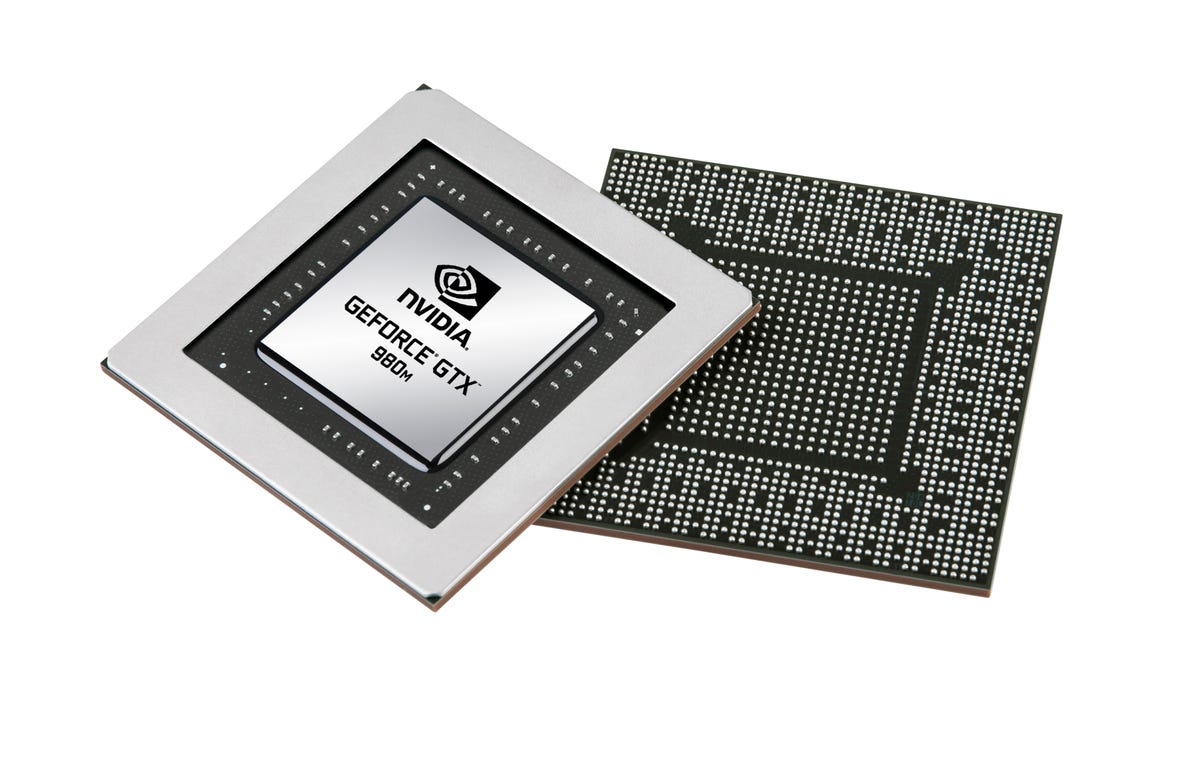
Nvidia
Gaming laptops have come a long way in the past few years, from big bulky boxes that could barely play new games to slim, powerful rigs that can pump out high resolutions and fast frame rates.
But even the best gaming laptops perform well behind midlevel gaming desktops, which have more powerful CPUs and GPUs. Nvidia hopes to close that gap with its new line of mobile graphics cards, the high-end GeForce GTX 980M and 970M.
In addition to generally faster, more power-efficient hardware, these new cards offer several tweaks designed to improve gaming performance in laptops. For example, Voxel Global Illumination is a new technique supported by the 980M and 970M for generating indirect lighting sources, potentially replacing hand-drawn faux reflected lighting in many games.
Multiframe antialiasing, or MFAA, is a more efficient way to generate antialiased graphics, which makes angled lines look smoother and less jagged. This new method takes samples across multiple frames and generates the smoother-looking lines with less computational overhead.
Dynamic super resolution is another Nvidia process for improving image quality, using the extra computing power of the graphics card to compute the requested frame in higher 4K resolution, then scaling it down to the native resolution of the display (most often 1,920×1,080), creating an image with more access to high-end details than a straight 1080p render would afford.


Sarah Tew/CNET
In addition, Nvidia says its made improvements to its Battery Boost feature, as found in the currently available Nvidia Experience software package, an app that allows you to control game settings and optimizations, as well as easily install new GPU drivers. With Battery Boost, you can activate a preset that will lock the frame rate to a level you specify, typically 30 frames per second, which allows the GPU and CPU to ramp down when possible, thereby saving battery power.
We tested a laptop with the GeForce GTX 980M card, the new Asus G751J. In our standard gaming benchmark tests, the Asus ran our Metro: Last Light test at high settings and 1080p resolution, at an impressive 45.7 frames per second. BioShock Infinite at the same settings ran at 115.8 frames per second. By way of comparison, a similarly high-end Alienware 17 laptop with a last-gen GeForce GTX 880M card ran the same tests at 25.3 frames per second in Metro: Last Light and 80.3 frames per second in BioShock Infinite.
For a real challenge, we hooked the Asus laptop up to a 4K television. There, using the same very high-end settings and bumping the resolution up to 3,840×2,160, the GeForce GTX 980M gave us 14.6 frames per second in Metro: Last Light and 41.6 frames per second in BioShock Infinite. Even gaming desktops need to dial back the settings at 4K resolutions, and you should expect to trade off some detail levels for resolution if you want to game at 4K.
Systems with these new cards, including the Asus G751J and MSI GT72, should be available almost immediately, with additional systems coming during the holiday season.




